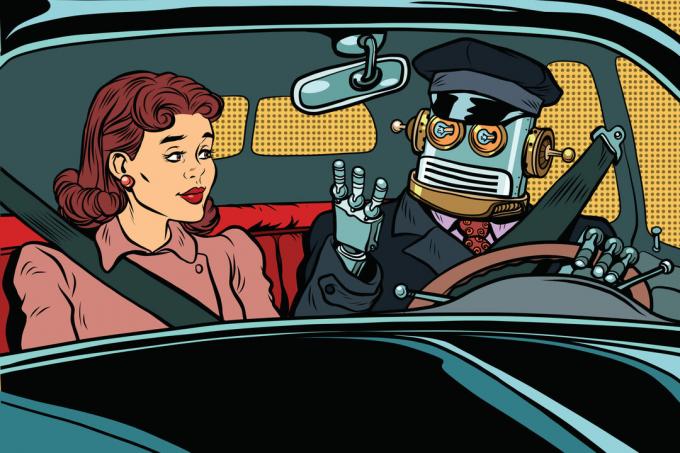Santos Dumont he was marked in Brazilian history for his great deeds in the field of aviation. He was a scientist with great ingenuity and ability to invent objects. He was born into a very wealthy family because his parents owned coffee plantations. He devoted his life to aeronautics and aviation and spent his last years depressed to see the plane used in war.
Accessalso: Benjamin Franklin, one of the greatest scientists in American history
birth and youth
Alberto Santos Dumont was born in July 20, 1873, on a site that was in Cabangu, currently known as the city of Santos Dumont, in Minas Gerais. Santos Dumont descended from a French family, since his father, HenriqueDumont, he was the son of François Dumont and Euphraise Honoré, two Frenchmen who came to Brazil in search of precious stones.
![Alberto Santos Dumont was born in the interior of Minas Gerais and was one of the great names in aviation in the world.[1]](/f/4e1f86ecf7389a0332720ad3da46d9d6.jpg)
Santos Dumont's father was an engineer by training, having worked in the construction of railroads. Afterwards, he decided to acquire land in the interior of São Paulo and dedicated himself to
coffee growing, one of the most profitable activities in Brazil at the end of the 19th century. Thus, Santos Dumont was born into a very wealthy family.Santos Dumont's mother was called Francisca de Paula Santos and she was the daughter of a commander, therefore, she also came from a wealthy family. From the marriage of Francisca to Henrique, eight children were born, of which Alberto Santos Dumont was the sixth and fourth male.
During his childhood, Santos Dumont had great interest in literature, being the works of JuliusVerne, French writer, his favorites. As a child, Dumont was interested in the railroad his father had built on his farm. Henrique Dumont's lands were so extensive that the railroad built within them was 96 km long.
Santos Dumont's taste for the railway machinery and for others that existed on his father's farm already demonstrated his willingness for his future work. From Verne's reading, he drew his admiration for the sky and aviation, which he would take throughout his life, becoming one of the great Brazilian scientists.
going to Europe

From 1890 onwards, Santos Dumont's life underwent some transformations due to the your father's health. That year, Henrique Dumont suffered an accident falling from a cart. During the fall, he hit his head on the ground, resulting in a stroke and a consequent hemiplegia (paralysis of one side of the body).
Due to the accident, Dumont's father was unable to manage the farm and decided to sell it to seek treatment in Europe. The lands of Henrique Dumont were sold by 12 thousand contos de réis, a real fortune. Dumont's parents kept 1/3 of the amount, and the rest of it was divided among their children.
On April 6, 1891, Santos Dumont, some of his brothers and their parents set sail for Paris. Was in France that Dumont found the conditions so that he could develop your scientific skills. The French capital was at the height of belle epoque, period in European history marked by the euphoria with the progress and advancement of science.
In Paris he expressed interest in elaboration of airships and balloons, but the lack of funds (since he still depended financially on his father) made him give up on these plans temporarily.
He then devoted himself to study of combustion engines internal, and this interest led him to buy a car manufactured by Peugeot in 1891. The car was doing 16 km / h, and when his parents returned to Brazil (at the end of 1891), Santos Dumont brought it with him. This made him the first man to drive a car in South America.
On his return to Brazil, Santos Dumont was emancipated for his father, he received a share of his inheritance and a promise from his father: “you don't have to think about earning a living: I will leave you enough to live”|1|. Santos Dumont then returned to Paris, and there he began his career as one of the great names in aeronautics and aviation.
Dumont arrived in Paris in 1892, just days before his father's death. He hired a professor who helped him with subjects such as physics and chemistry. Later, he joined the Bristol University, in England, as a listener and participated in classes on the construction of engines and aeronautical and naval objects.
Accessalso: Leonardo da Vinci – one of the greatest inventors in human history
Dumont Projects
![The 14-Bis airplane was one of Santos Dumont's most famous projects, and with it the Brazilian aviator managed a 220-meter flight.[2]](/f/55b1912be14c9d527435659a66a348f4.jpg)
From 1897, Dumont began his first tests in the field of aeronautics. From then onwards, he dedicated many years of his life, first, to the production of airships and, later, to airplanes. Your first airship it was used in February 1898, but failed, only managing to have a successful flight on its third attempt, in September of the same year. On that occasion, Santos Dumont arrived at 400 meters high.
In November 1901, one of his airships guaranteed him a prize. On November 4, he ran for the AwardDeutsch, which consisted of completing a journey in Paris piloting an airship for up to 30 minutes. Santos Dumont achieved the feat and received 129 thousand francs for his conquest, but he didn't keep the money: he gave half to the team that helped him build the airship, and the other half distributed it to poor Parisians.
During this period, Dumont also dedicated himself to projects for other airships, always looking to improve his constructions. He even toured Paris using them and was one of the city's most recognizable personalities at the beginning of the 20th century. It wasn't until 1905 that he began testing to develop an aircraft that was heavier than air.
From these projects was born the 14-Bis, an airplane developed by Santos Dumont, with a 50 horsepower engine. The 14-Bis had two outstanding flights: the first took place on October 23, 1906, with 60 meters high. The second flight was assisted by members of the International Aeronautical Federation (FAI), on November 12, 1906, making a flight of 220 meters to six meters high in Paris.
In early 1909, he presented his new project: the demoiselle. This plane was then his new success, and, after going through some adjustments, it even reached 90 km/h. As he didn't want to patent it at the time, many planes were built based on it.
Last years
In 1910, Santos Dumont had an accident in one of his new Demoiselle models, and that's why he decided to retire, his health could no longer bear the risk that his trade involved. At that time he was also diagnosed with multiple sclerosis, a disease that still has no cure.
In that same decade, Dumont saw your invention used in First World War, which disturbed him a lot. During the war, he was still falsely accused of being a German spy, but it was found to be innocent. This episode and the worsening of his health condition made him decide to return to Brazil.
The last years of Santos Dumont's life were marked by depression, and that is why he went through several nursing homes in Europe and Brazil. The terrible situation of his physical and mental health meant that he was transferred to the care of his nephew Jorge Dumont Vilares.
Uncle and nephew moved to a hotel in Guarujá, in the interior of São Paulo, but the Constitutionalist Revolution contributed to further undermine the Brazilian inventor's mental health. It is believed that, on the day of his death, planes flew over and bombed some region close to where Santos Dumont was.
Disturbed by the scene of a plane wreaking havoc, Santos Dumont took advantage of his nephew's brief departure and committed suicide, on July 23, 1932, at the age of 59.
Accessalso: Understand the context of the outbreak of the Constitutionalist Revolution
Curiosities
Santos Dumont was short, only 1.60 meters tall.
His biographers say he was vain and extremely competitive.
In 1926, he asked the League of Nations to ban the use of aircraft for war.
He made other inventions, such as the wristwatch and the hot shower.
He is not internationally regarded as the inventor of the plane. This feat is attributed to the Wright brothers.
Note
|1| JORGE, Fernando. The struggles, glory and martyrdom of Santos Dumont. Harper Collins: São Paulo, 2018.
Image credits
[1] rook76 and Shutterstock
[2] Luis Chavier and Shutterstock
By Daniel Neves
History teacher
Source: Brazil School - https://brasilescola.uol.com.br/biografia/alberto-santos-dumont.htm


